Menu
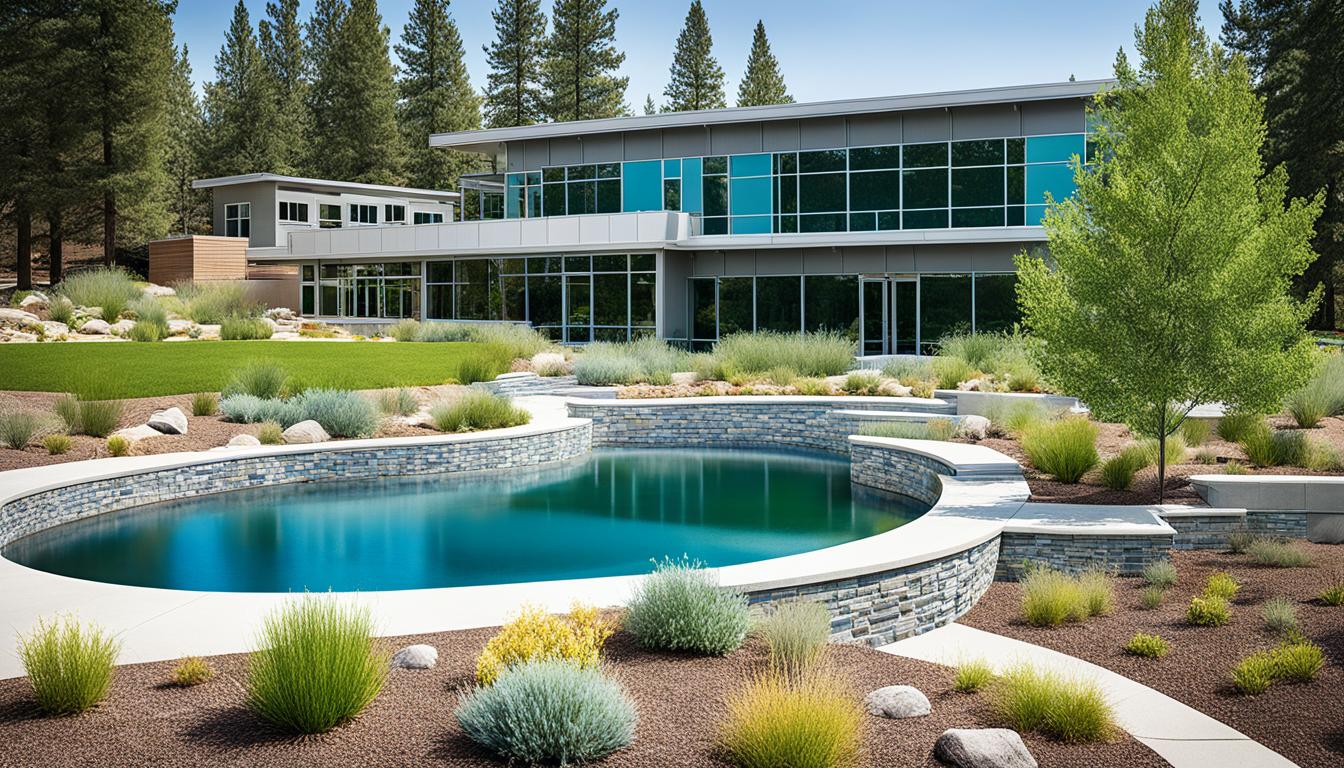
The Central Nebraska Irrigation Project is working to save 2.4 billion gallons of water in three years. This major goal shows how important it is to manage water sustainably. It echoes the efforts happening worldwide to make better use of natural resources. In California, the Ceres Connect the Drops project brings together 35 companies to promote intelligent water use. This is crucial as California faces more water problems due to climate change.
My research looks into many water management success stories, from groups using water better to new technologies. For example, some farmers have made their water use 15% more efficient and saved around 100 million gallons. These projects show how diverse and effective water-saving efforts can be.
In places like Kenosha, Wisconsin, and Milwaukee, urban water management cases spotlight smart strategies. These efforts promote water conservation in cities. They also reflect the broader issue of water use around the world. By talking to people in the field, we can see how business practices and community work can make a big difference in water use.
Water management combines many strategies to use and share water resources wisely. Knowing how to manage water helps us use it sustainably. It’s crucial for protecting the environment and meeting both economic and eco-friendly goals.
Water management plans how to use water well to get the most benefits. In places like cement factories that use a lot of water, this is vital. Using less water but still being effective is the key, like Ambuja Cement Ltd showed. They found ways to save water across their many sites while still growing their business.
Practices that keep our water use sustainable help our planet and our economies. For example, in Junagadh, a project aimed to reduce salt levels in water. It led to new water storage sites and better managing water, helping communities and the environment. This shows how the right water management methods can make a big difference.
Choosing the right water management methods is essential for our future. It should not just save water but also support a healthy environment. With the right examples and practices, we can move towards a more sustainable world.
BP’s Kwinana Refinery started a big project to use less water. They found new ways to manage water. This change wasn’t just good for the environment. It also led to working closely with others, like water companies and local groups.
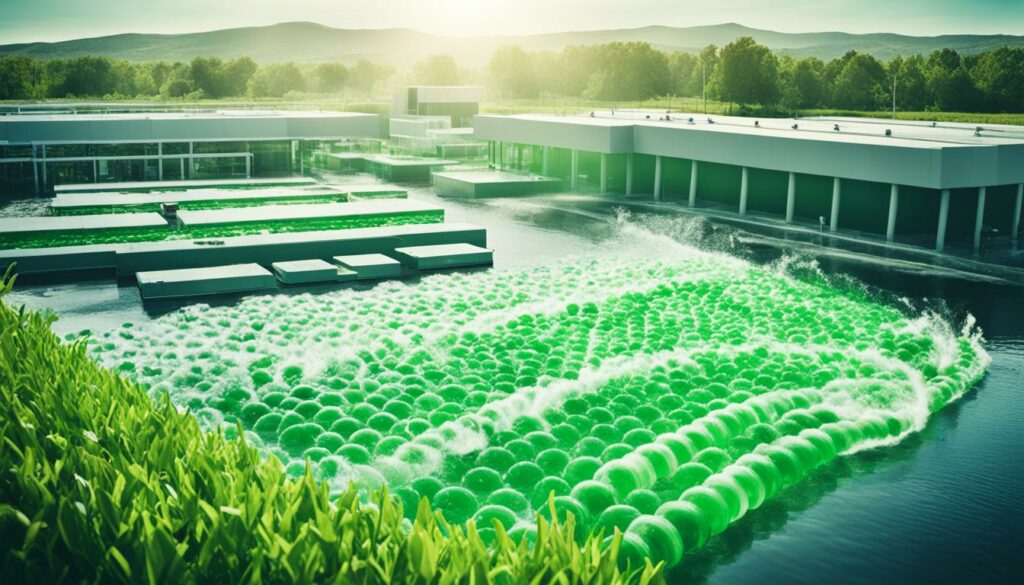
Working with partners helped BP to save water. They worked together inside and outside the refinery. This included partners in the community and those who set rules about water. Thanks to everyone’s efforts, BP cut their water use by 42% from 1996 to 2014.
The results of BP’s work were amazing. They used 93% less fresh water, going from 6,152 to 460.9 m3/day. BP also found ways to use water more efficiently. Their improvements show how well their new water plans worked.
| Metric | 1996 | 2014 | Reduction |
|---|---|---|---|
| Total Water Use (m3/day) | 7,250 | 4,206.1 | 42% |
| Potable Water Use (m3/day) | 6,152 | 460.9 | 93% |
| Potable Water Efficiency (m3/T) | 0.40 | 0.026 | 93% |
Not just that, BP also redirected some waste water to the sea in a better way. This move made the refinery more respected in the local area. Their teamwork and smart ideas show what the right way forward for industry looks like.
EDF’s rainwater collection project in Norte Fluminense, Brazil, caught my eye. Their work on managing water and energy was super smart. This not only helps them out, but it shows others a great example to follow.
Setting up the rainwater system had some tough spots. The plant’s water levels dropped by 50 cm over 12 years at the intake. EDF put 2.5 million BRL into the project to sort this out. Now, on rainy days, up to 225 m³/h of water is saved, covering about 30% of the plant’s needs. That’s water savings of 100,000 to 130,000 m³ every year.
This system didn’t just save water, it saved energy too. They don’t need to pump water on rainy days, saving 29kWh. This shows how managing water and energy together can really work well.
Plus, cleaner water in the cooling tower means they flush it less. They got a big award for their smart work from Petrobras. It’s a top honour for their great ideas on energy and water.
| Investment | Annual Savings | Energy Savings | Turbidity Reduction |
|---|---|---|---|
| 2.5MBRL (USD 1.47M) | USD 15,000 – 20,000 | 29kWh on rainy days | 20.0 to 5.0 NTU |
EDF is really leading in saving water and energy the smart way. Their projects are a guide for others to make big changes too.
ENGIE’s way of working together for water conservation shows that we can create new ways to manage water. They bring people together so that everyone feels responsible for saving water. This method focuses on getting communities, businesses, and officials to work towards the same water-saving goals.
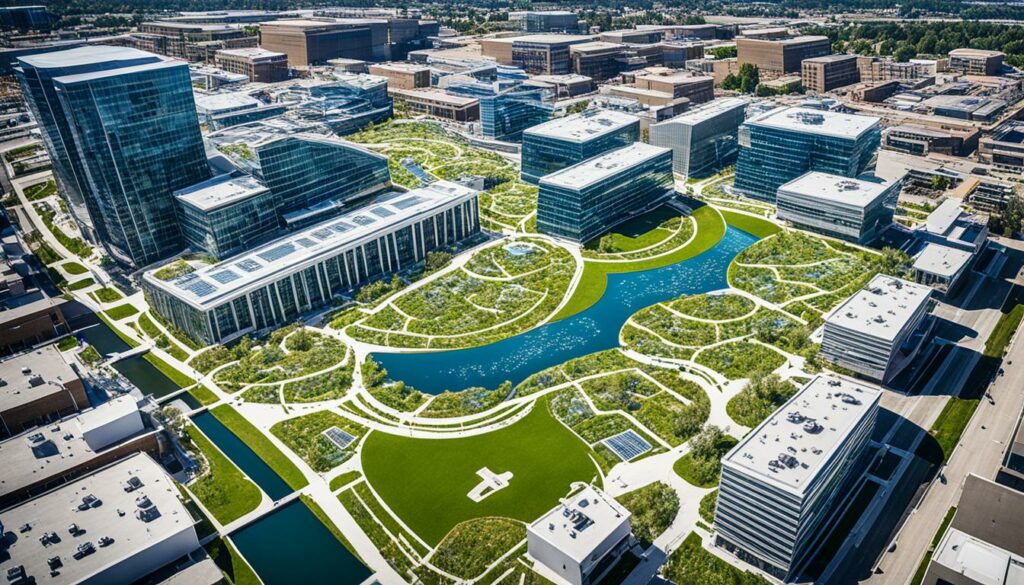
University of Rochester’s Medical Center is a great example here, covering 5.4 million square feet. They have used smart water-saving techniques, following ENGIE’s lead. Also, at NC State University, they reached a 95% waste diversion by taking buildings apart. These examples how strong effort can make a big difference.
ENGIE’s work matches with actions at Oregon State University. They now use reusable food containers everywhere thanks to the Eco2Go plan. This change means large, community-wide water savings. Additionally, Catawba College’s move into solar power shows their drive to lead in eco-friendly energy. It’s a sign of ENGIE’s innovation in water management methods.
Looking at San Jose State University, they use a lot of water but still aim to cut down. This shows how everyone’s work can lead to big drops in water use. Projects like UT Farm Stand at the University of Texas prove that getting people involved is key to green success.
Many other schools and initiatives also support this shared effort for great water management. By teaming up with communities and businesses, ENGIE has shown a strong way to use and save water in growing areas.
To sum up, ENGIE’s effective way to save water teaches us that by joining forces, we can make fantastic progress. Their work hits the mark on working together and involving everyone.
At its Antoing limestone quarry in Belgium, HeidelbergCement has set a great example in water management. Skip from pouring water to sharing it, the quarry shows us how to use resources better. They’ve not just helped themselves, but also made life better for those around them.
Back in 1998, the Antoing quarry made a key deal with a public water company, SWDE. Rather than waste extraction water, they now treat 95% of it for safe use. This plan stands out in the field for being smart and eco-friendly.
The pact between HeidelbergCement and SWDE benefits both sides. It made the quarry rethink its water use, lowering harm to the area’s water sources. Plus, it encouraged other partnerships, like the one Sagrex has in Lemay, Belgium.
This change at Antoing goes beyond business wins, helping the city’s people and nature. It’s boosted water safety and cut down harm to the environment. This has made working together with locals and authorities easier.
Looking forward, like at the Tellier quarry, we can see these positive changes spreading. This story from Antoing proves that good water management can be both money-wise and kind to the planet. It’s a model for everyone to follow, in Belgium and beyond.
Learning from projects like Antoing shows us big ideas can help everyone. It combines money, nature, and social good in one smart plan. The Antoing story is proof that working and thinking together can do a lot.
L’Oréal is working hard for a greener future. It has a special programme to use water better and find new ways to recycle it. Thanks to this, many hair salons can now use a special showerhead that saves a lot of water. This device cuts back on water use by almost 70%. It’s a big step towards a more sustainable approach.
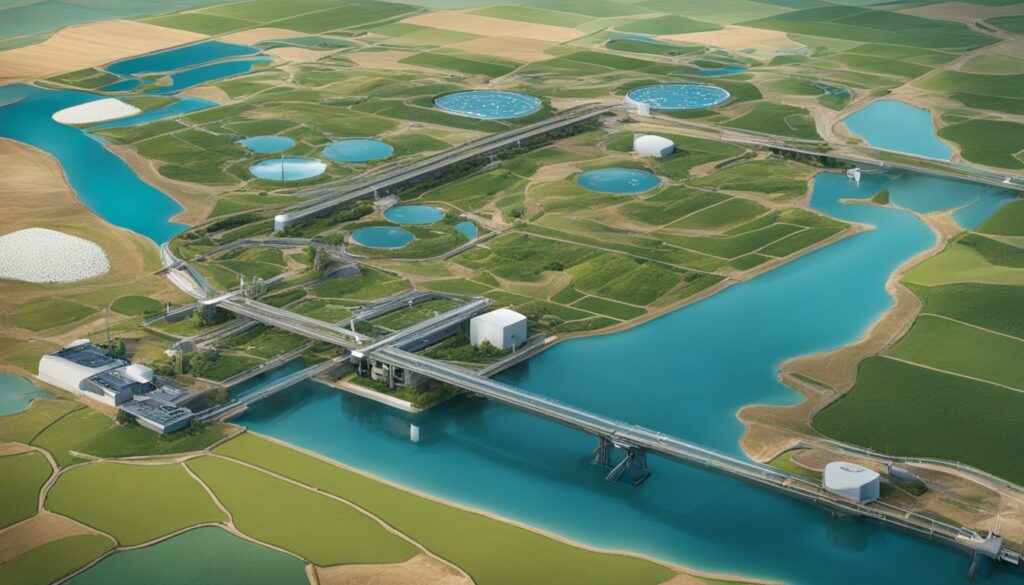
L’Oréal aims to use water wisely and again, supporting a cleaner planet. Their special showerhead is already in use in more than 10,000 salons. So far, they’ve saved enough water to fill 72 Olympic swimming pools. They plan to help over 200,000 salons worldwide, making an even bigger difference.
L’Oréal is always looking for new ways to recycle water. They recently invested in Gjosa, which is great news for using tech to save water. By putting effort into these new technologies now, they’re preparing for a future where water is even more precious. They aim to help prevent water problems for millions of people around the world by 2030.
Moreover, L’Oréal’s commitment to water and sustainability shows in their big team of researchers. They have 20 centres which include over 4,000 scientists and 5,500 tech experts. This strong team works hard to find new ways to care for the planet. The programme is a great example of how big companies can make a real difference. They’re showing how caring for the environment can also be good for business.
Procter & Gamble (P&G) is doing a lot for the environment in China. They show great examples of managing water resources well. They use smart solutions for water management in many big cities like Guangzhou, Beijing, and Shanghai.
P&G makes sure to use water wisely in all its sites. They understand that less water use is key but without affecting their work. In 2011, they were the top in producing enviro-friendly disposable nappies with a 39% market share.
Keeping products safe and good is core to P&G’s work. For example, in 2014, Olay was very popular in China, getting 20.1% of the market for whitening and sunscreen items. Even when they got bad press about palm oil, P&G quickly made changes. By April 2014, they promised their palm oil would come from places with no deforestation by 2020.
P&G aims to be both safe and green. They are a good example for other big companies. They balance the need for efficiency in using water with being careful about safety.
In China, P&G shows that involving workers in saving water is important. They use new ways to manage water, which helps both the business and the planet. Sustainability is deeply built into their plans.
| Key Metric | Value |
|---|---|
| FDI Contribution to GDP | 33% |
| Employment Contribution by FDI | 27% |
| Value Added by P&G Retailers and Distributors (2014) | USD 11.28 billion |
| Employment by P&G’s System in China (2014) | 612,000 |
| Market Share of Disposable Diapers by P&G in 2011 | 39% |
| Olay Market Share in Whitening/Sunscreen Products (2014) | 20.1% |
The Queensland Gas Company (QGC), a part of Shell, shows how successful water management is done. They turn water from coal seam gas mining into something useful. Nearly all the water from this process is treated, ready to be used in farming or safely released into the environment.
Veolia’s water treatment plants are famous for their effective ways. They make sure to use as much water as possible, cutting down on waste. Despite difficulties, like membrane scaling, the Kenya plant still helps a lot. It’s not far from Chinchilla and helps with farming, provides water to the town, and improves local rivers.
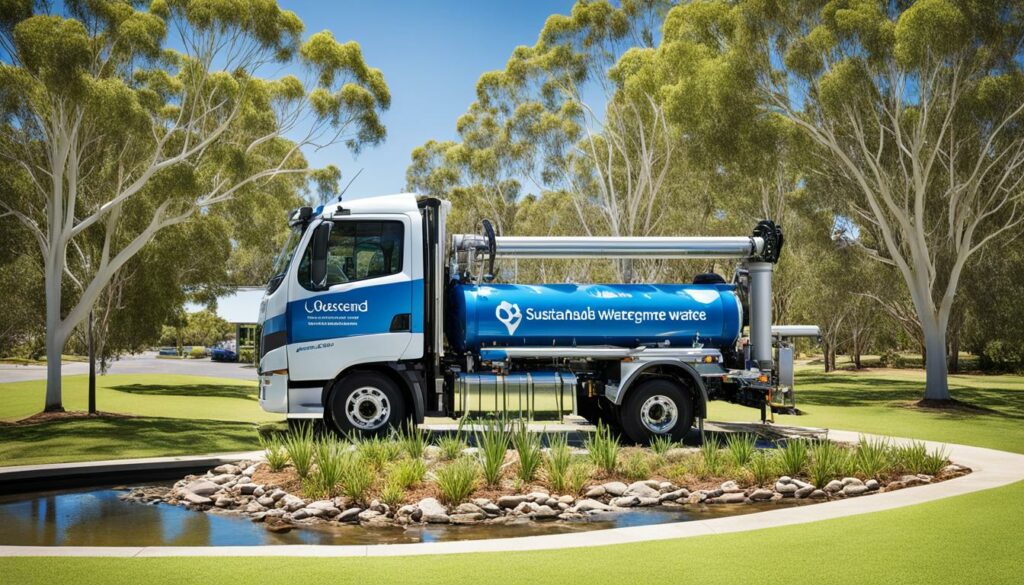
The Northern Water Treatment Plant by QGC is working at full speed, purifying a lot of water daily. It’s the biggest of three similar plants, showing a way to handle salty water from gas extraction. Since starting in 2015, it has won awards, including a top prize at the Global Water Awards.
This plant uses top-notch technologies from GE. They can treat water so well that 97% of it can be used again. Such a high recovery rate is hard to achieve. But, QGC has shown it’s possible, leading the way in saving and reusing water resources in the energy industry.
These plants change how we see the water from gas mining. Now, it’s not just waste; it’s a valuable resource. QGC doesn’t just do good work. It also helps others learn how to get the most from their water resources. This shows a path to benefit not only the company but also the local communities.
The lessons from these efforts are many. They show how smart water management can be done. They offer hope for a future where we use our resources wisely.
Shell leads the way in using less freshwater through smart strategies. They’re committed to managing water well for a sustainable future. Part of this includes working closely with local authorities to improve how cities handle water.
Working with local groups, Shell has cut down on how much freshwater it needs. They use smart methods like MINLP and MILP to make water systems work better. These steps help in reusing water, cutting the amount of new water needed, and improving how water is used again and again.
In a unique case with shrimp shell waste, 48% of waste is usually thrown away. Shell found ways to use less water, aiming for just 277 tonnes an hour to get chitosan. They mixed problem-solving with maths and saved lots of water. This is a great example of making urban water use smarter.
One important win from Shell’s work is fewer trucks used to move freshwater. Thanks to their partnership with the locals, they’ve designed water systems that need less new water. They use special math and plans for reusing water. The best part is these plans make sure the environment stays safe while saving water.
Less truck traffic means less polluting gases and lower costs. This is part of Shell’s big effort to manage water and the environment better. Local areas benefit too, as fewer trucks means less traffic jams and safer roads. It’s a win for everyone and helps in managing water in cities well.
Shell is focused on using water better and promoting good ways to look after the planet. Their teamwork with others is inspiring, showing how to solve environmental challenges together. It sets a great example for other companies wanting to do good for the Earth.
Vale’s work on water management in mining deserves a spotlight. It has made mining operations much safer and efficient. Their efforts were backed by new technologies and a strong view on sustainability.
Vale used analytics to check the stability of their tailings dams. This kept accidents from happening. It made work safer and more efficient. By using predictive maintenance, Vale cut down on the time their trucks were not running. This approach helped them work better, joining top companies in the industry.
Innovative water management solutions have brought good results. Anglo American, for example, reduced work injuries by a third in one mine. This shows how better safety methods help everyone.
Technology has been a key part of Vale’s better water management. It has led to more copper being produced, 15% more. This also lowered costs, mirroring the success of other leading companies in the industry.
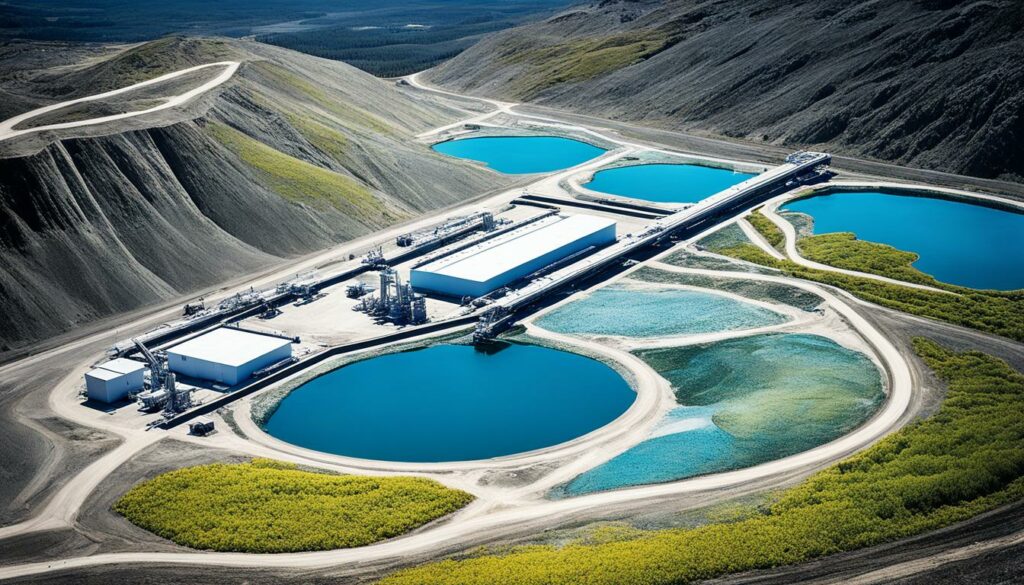
Using seawater in mining is a smart way to save fresh water. In fact, many mining firms now focus on how they use water, aiming to recycle over 90% of it. This includes practices like reverse osmosis and microfiltration.
Places facing water shortages benefit greatly from smart water plans. About 70% of big mines are in areas with little water. This fact shows how important new water ideas are for the planet and local communities.
Water management case studies show that companies like Vale lead in smart use of water. They not only protect the environment but also care for people living near their mines.
| Company | Achievement |
|---|---|
| Rio Tinto | Reduced autonomous truck downtime by 20% |
| BHP Billiton | Saved $5.8 million annually by optimising hauling trucks |
| Goldcorp | 20% reduction in energy costs through optimisation |
| Anglo American | Reduced lost-time injuries by 30% |
| Newmont Mining Corporation | 2% increase in gold recovery using grade control optimisations |
| Barrick Gold Corporation | 35% reduction in maintenance costs |
| Vale | 15% increase in copper production through process optimisation |
Efforts in global water management are achieving amazing results. They set a great example for upcoming projects. These efforts show how managing water well can work for everyone.
The IWRA highlights many projects making a difference in water management. For example, the ICPDR began the first Climate Change Adaptation Strategy for the Danube River in 2010. This showed how important working together is. In Spain, the Canal de Isabel II cut down on wasted water by 30% in the past ten years. This is a big win, thanks to smarter ways of working.
| Project | Location | Achievements |
|---|---|---|
| Sustainable Water Management Project (SWMP) | Salamieh District | Minimized water consumption, yield improvements, increased water use efficiency, stabilisation of groundwater tables |
| HydroBalance Project | Norway | Energy storage from hydropower to support intermittent renewable electricity generation in Europe |
| Reventazón River Plant | Costa Rica | Focus on biodiversity protection through sustainable hydropower |
| Solar PV Panels on Reservoirs | Anhui Province, China | Generating power from solar photovoltaic panels floating on water reservoirs |
Even with many success stories, some challenges remain in water management. Problems like money issues, rules, and lack of tech can slow things down. Yet, with support from policies, working with others, and new tech, these issues can be beaten.
Take the Kendal Power Station in South Africa, for example. It focuses a lot on saving water in its power plants. In Spain, the Canal De Isabel II did a study in 2024 on better ways to measure how much water is used. This is another proof that new ideas can make water management more efficient.
In today’s corporate world, looking after water is key. The Pacific Institute shows great examples in managing water smartly in cities. These examples teach us how to use water in a way that meets our needs and keeps the planet happy, matching the sixth global goal for Sustainable Development.

Nebraska shows us a cool project by Cargill, Nestlé Purina, and The Nature Conservancy. They aimed to save a huge 2.4 billion gallons of water over three years in the beef chain. It’s all about working together and using water well for the future of our water resources.
California’s Ceres Connect the Drops brings 35 companies together. They work on strong policies for saving water, reusing it, and managing it well. This is so important in a place like California, where water is very short, to keep the economy and nature healthy.
Nebraska has also seen success in saving water on farms. Thanks to a water-saving plan, farmers were 15% more efficient, saving 100 million gallons of water. These good results show how making simple changes can have a big positive effect.
Big names in business are also working hard to give back more water than they use. Keurig Dr. Pepper and Cargill are leading the way, setting clear goals to save water. This change is being asked for around the world, like in Europe, India, and China.
Businesses, like Unilever, know water saving can also save money, up to $300 million by 2030. For food and drink companies, saving water makes a big financial difference. They find water risks are more costly than dealing with carbon. So, it makes sense for companies to use water wisely, not just for nature but to save money too.
The value of effective water management shines in many global *water management case studies*. These studies show innovative water solutions. For example, a pilot programme tested having farmers manage irrigation directly at 88 sites. 73 farmer water associations played a key role in this.
These groups worked on better water use, raised money for infrastructures, and improved safety around reservoirs. They also cut down on water loss and cleaned sediments. This work made a big difference in water management.
*Water management case studies* prove that when farmers take charge of water, great things happen. Regular checks on water systems were done. This made everything work better. Also, making people pay for water based on what they use made everyone more careful.
Towns helped a lot by giving money to farmer water associations. For example, towns that set up these groups got $2,000. Each new group got $800 more. This support helped build strong local water management systems.
In China’s Fujian Province, a big change came in 1992. It focused on how small water systems were built. The goal was to use water smarter through teamwork. This effort taught a lot about managing water better.
In business, the CDP Global Water Report shares how companies deal with water challenges. It looked at data from almost 3,000 companies in 2020 and asked 2,433 about water safety in 2019. Ecolab stands out by saving a lot of water at Asia Pacific laundries with clever tech.
| Year | Initiative | Impact |
|---|---|---|
| 2020 | CDP Global Water Report analysis | 2934 companies reported on water risks |
| 2019 | CDP Global Water Report questionnaire | 2433 companies completed the water security questionnaire |
| 2018 | Ecolab’s water-saving technology | 445 million gallons savings at Asia Pacific commercial laundries |
Some *water management case studies* show big changes from policy actions. Reports like “Mississippi Headwaters” and the World Bank’s “Wastewater: From Waste to Resource” prove this. They highlight the many benefits of good water management. Such stories offer important tips on how to look after our water well.
In the future, making water management scalable is key. It helps us tackle the challenges of water scarcity and climate change. We should learn from past and current sustainable projects to craft better, adaptable strategies. These should fit various environmental and socio-economic settings.
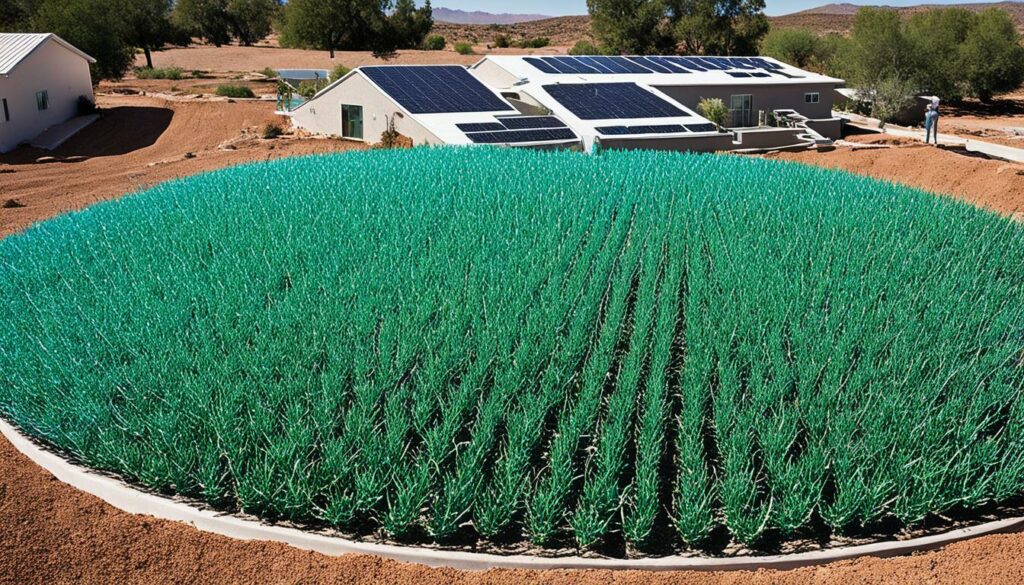
Taking good water practices to a bigger scale needs assessment of what’s already working. For example, Australia’s water trading system and Chile’s focus on protecting the environment in water markets show world applicable ideas. Also, the Seed Money project’s five drought governance strategies in the Delta regions provide a broader use framework.
In the Netherlands, work in four regions helps identify key legal and institutional issues in new water use techniques. This can show us how to use similar approaches in other places too.
For those making decisions, it’s crucial to back these scalable practices with the right policies. Predictions show that armed conflict risk in Africa can differ until 2050, based on socio-economic and climate changes. Hence, strong water management strategies should be part of their plans.
Places like Israel, Jordan, and Saudi Arabia are looking at market systems for their water scarcity issues. China, meanwhile, is trying out a scheme in the Poyang Lake Basin to see if market-based water distribution really works.
Also, building and looking after semi-fixed dunes in city beaches shows how team work boosts the flow of nature’s benefits. Getting everyone involved, like with the Blue Carbon project in the Balearic Islands, shows impact of broad, shared strategies.
| Region | Focus Area | Key Practices |
|---|---|---|
| Australia | Water Trading System | Comprehensive framework established in 2007 |
| Netherlands | Water Reuse & Brackish Water | Mapping legal and institutional preconditions |
| Middle East | Scarce Water Resources | Exploring water markets in arid environments |
| China | Market-Based Water Allocation | Pilot projects in Poyang Lake Basin |
| Chile | Environmental Protection | Compliance with water rights regulations |
To sum up, merging the best water management practices with smart policies points the way for future projects. By highlighting scalability and recommending informed policies, we can create fair and effective water governance climates. This supports global goals for sustainability.
After exploring many water management cases, we see the vital role of good strategies. Examples like BP’s lower use of drinkable water and EDF’s rainwater collection in Brazil show the need for various methods. These show industry changes to be more environmentally responsible.
For towns and cities, things are complex. They must handle polluted rainwater and balance city growth with nature’s needs. A study from the Center for Watershed Protection shows a danger point for streams when too much of the ground around them is paved. The Clean Water Act makes sure towns do what’s needed to protect waterways.
Groups working together, like SCW and PWD, have proved how powerful teamwork can be. They get a lot done for land and water protection with help from funds. It’s vital they catch the first flush of rainwater to keep water safe from harmful stuff like pesticides and waste.
In Vermont, the WISPr project links towns with non-profits to do good. Big companies and small towns can join forces this way. The key is everyone working together smartly to keep our water systems healthy. This teamwork is key to a lasting, positive impact.
Successful strategies for managing water sustainably include working with others. This means teaming up with companies, using new technologies, getting people involved, and improving how water is reused.
BP works together with local companies and officials to use less drinkable water. It shows a great way to work with others for the good of the environment and the local people.
EDF had some tough problems starting up, but they found clever solutions. These solutions cut down on water and energy use. It proves that saving water can help meet big sustainability goals.
ENGIE brings everyone together to save water and make sure water keeps flowing. It shows that teamwork is key to save water wisely.
HeidelbergCement’s change to supply water instead of just getting rid of it was a big win for the community. Thanks to smart planning and teamwork, many people have benefited.
L’Oréal is all about doing more with water it already has. They set a high standard by using new processes and recycling treated water. This approach puts new technology at the heart of managing water well.
P&G in China is using water smarter thanks to special plans. They keep a close eye on water quality while saving water. They make sure their way of working helps the environment too.
The Queensland Gas Company turned waste water into something useful for the area. By doing this, they showed everyone a great way to turn waste into a valuable resource.
Shell is working closely with local areas to use less freshwater. This not only lessens the need for huge amounts of water but also cuts truck traffic. It all helps to protect nature.
Vale uses new, efficient ways to manage water in mining. They focus on safety, do things better, and are a top example in the mining world for water care.
The IWRA highlights what helps or hinders successful water projects. Their findings are a great help for anyone looking to do better in water management worldwide.
Studying successful projects helps us see what works. The Pacific Institute’s work highlights key tips and actions for companies. These lessons show how to tackle water and sanitation goals head-on.
New tech makes water use more efficient and promotes reusing. This is vital for protecting our resources and our future. Innovations are key to better managing our water today.
For future projects, experts suggest a few key things. These include looking at what works on a large scale, making good policies, and using new and joint efforts. These tips ensure water is managed well and sustainably.